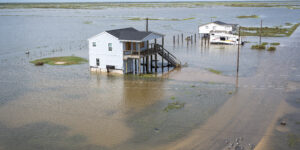According to MarketScout’s Market Barometer, the fourth-quarter 2022 composite rate for U.S. commercial lines was up 5.1 percent.
The Dallas-based distribution and underwriting company said property insurance “continues to be challenging,” with Q4 rate increases of 9.3 percent overall. Some catastrophe-exposed properties have been assessed increases as high as 24-30 percent, MarketScout added.
“On Jan. 1, 2023, property cat reinsurance renewals were completed except in instances of poor underwriting and continuous losses,” said Richard Kerr, founder of MarketScout. “Virtually everyone was assessed more restrictive terms and conditions. The trickle down will have a notable effect on the profits of property MGAs and program managers due to lower base commissions.”
Last November, MarketScout was acquired by managing general agent Novatae Risk Group. Kerr was named CEO of Novatae.
Cat-exposed properties also headlined MarketScout’s Market Barometer for personal lines, which overall held relatively steady at 5.2 percent increases in Q4. However, Kerr noted, “Catastrophe-prone areas, such as wildfire zones in California and wind-exposed Florida locations, are being assessed higher rate increases, sometimes as much as 30 percent to 40 percent.
“Reforms recently enacted by the Florida legislature may help moderate rate increases for all homes in Florida, but any home which is wind exposed will still experience rate increases,” he added.
Personal auto is also trending up, with a composite increase of 5 percent in the last quarter of 2022.
Turning back to commercial lines, MarketScout said cyber insurance rates are moderating but still came in at plus 20 percent in Q4.
Kerr said additional moderation in overall commercial rates could occur if there is an economic slowdown or if interest rates continue to increase.
“In the early 1980s, insurers did account for an interest income float on premiums received, better known as Cash Flow underwriting,” Kerr explained. “This concept was mostly applied to longer-tail casualty lines which have slower and longer claims payouts. As insurers accounted for the increased income from interest rate payments on premiums paid, rates were adjusted downward. Arguably, an insurer could write at a 100 combined loss ratio because the interest they received on booked premiums was 12 percent to 20 percent. We are a long way from seeing interest rates at those levels, but even at 5 percent it will have a positive impact on the ROI of some insurers, possibly resulting in a moderation of rate increases.”
The Market Barometer is based on a pricing survey by the National Alliance for Insurance Education and Research.





















 Why Insurance Telematics Integrations Fail
Why Insurance Telematics Integrations Fail  Acrisure to Buy MGA Vave From Canopius
Acrisure to Buy MGA Vave From Canopius  Executives on the Move at HSB, American Modern Insurance Group, AIG
Executives on the Move at HSB, American Modern Insurance Group, AIG  How Carriers Are Pairing AI and Process Discipline to Drive Subrogation Outcomes
How Carriers Are Pairing AI and Process Discipline to Drive Subrogation Outcomes 